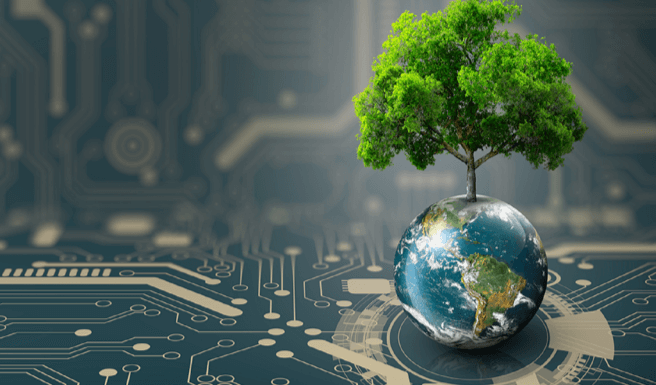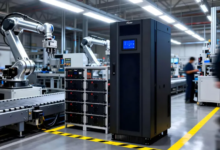How is the USA leveraging technology for environmental sustainability?

Introduction
Environmental sustainability has become a crucial focus worldwide, with nations striving to reduce their carbon footprint and mitigate the impacts of climate change. The USA, being a leader in technological innovation, is at the forefront of this movement, leveraging technology to create sustainable solutions. This article delves into the myriad ways the USA is utilizing technology to promote environmental sustainability, from renewable energy advancements to smart city implementations and beyond.
The Role of Technology in Environmental Sustainability
Technology plays a pivotal role in environmental sustainability by providing innovative solutions to reduce waste, lower emissions, and conserve natural resources. The integration of advanced technologies in various sectors is transforming how we address environmental challenges.
Renewable Energy Innovations
Solar Power Advancements
Solar energy has seen remarkable advancements in recent years, with the USA investing heavily in solar technology. The development of more efficient solar panels and the implementation of large-scale solar farms are helping to reduce reliance on fossil fuels.
Wind Energy Developments
Wind energy is another critical area where the USA is making significant strides. Offshore and onshore wind farms are being expanded, with technological innovations increasing the efficiency and output of wind turbines.
Hydroelectric Power
Hydroelectric power remains a vital component of the USA’s renewable energy strategy. Modernization of existing hydroelectric plants and the development of small-scale hydro projects are enhancing the country’s clean energy portfolio.
Smart Cities and Sustainable Urban Development
Smart Grid Technology
The integration of smart grid technology is revolutionizing the management of electricity. Smart grids optimize energy distribution, reduce outages, and facilitate the integration of renewable energy sources.
Energy-Efficient Buildings
The construction of energy-efficient buildings is a key focus in sustainable urban development. The use of smart materials, advanced insulation, and energy management systems is reducing the energy consumption of buildings across the USA.
Sustainable Transportation
Innovations in sustainable transportation, such as electric vehicles (EVs) and smart public transit systems, are reducing emissions and improving air quality in urban areas.
Technological Solutions for Waste Management
Recycling and Waste Reduction
Advanced recycling technologies and waste reduction strategies are minimizing the environmental impact of waste. Automation and AI-driven sorting systems are enhancing the efficiency of recycling processes.
Waste-to-Energy Technologies
Converting waste into energy is an innovative approach being adopted in the USA. Waste-to-energy plants generate electricity from non-recyclable waste, reducing landfill use and greenhouse gas emissions.
The Impact of AI and Big Data on Environmental Monitoring
Predictive Analytics for Environmental Protection
AI and big data are being used to predict environmental changes and develop proactive strategies. Predictive analytics help in forecasting weather patterns, monitoring pollution levels, and managing natural resources more effectively.
Remote Sensing and Satellite Technology
Remote sensing and satellite technology provide valuable data for environmental monitoring. These technologies track deforestation, monitor ocean health, and assess the impact of climate change on various ecosystems.
Water Conservation and Management Technologies
Smart Irrigation Systems
Smart irrigation systems are transforming agricultural practices by optimizing water usage. These systems use sensors and weather data to deliver precise amounts of water, reducing waste and conserving resources.
Water Purification Technologies
Innovations in water purification are ensuring access to clean water. Advanced filtration systems and desalination technologies are providing sustainable solutions to water scarcity.
Sustainable Agriculture Practices
Precision Farming
Precision farming techniques utilize technology to enhance crop yields while minimizing environmental impact. GPS-guided equipment, drones, and soil sensors are improving the efficiency and sustainability of farming practices.
Vertical Farming
Vertical farming is an innovative approach to urban agriculture, reducing the need for large land areas and minimizing water usage. These farms use LED lighting and hydroponic systems to grow crops in controlled environments.
Government Policies and Initiatives Supporting Technology for Sustainability
The Green New Deal
The Green New Deal is a comprehensive policy framework aimed at addressing climate change and promoting sustainability. It includes provisions for investing in clean energy technologies and modernizing infrastructure.
Federal and State Incentives
Federal and state governments offer various incentives to promote the adoption of sustainable technologies. Tax credits, grants, and subsidies support renewable energy projects, energy-efficient buildings, and sustainable transportation.
Public-Private Partnerships in Sustainability
Collaboration for Innovation
Public-private partnerships are crucial in driving technological innovation for environmental sustainability. Collaboration between government agencies, private companies, and research institutions accelerates the development and deployment of sustainable technologies.
Case Studies of Successful Partnerships
Examining successful case studies of public-private partnerships provides valuable insights into best practices and the impact of collaborative efforts on sustainability.
The Future of Technology in Environmental Sustainability
Emerging Technologies
Emerging technologies such as blockchain, nanotechnology, and advanced materials are poised to further enhance environmental sustainability efforts. These innovations hold the potential to revolutionize various sectors and address environmental challenges more effectively.
Long-Term Sustainability Goals
Long-term sustainability goals are guiding the development and implementation of technological solutions. Achieving net-zero emissions, conserving biodiversity, and ensuring the resilience of ecosystems are central to these goals.
Challenges and Opportunities
Overcoming Technological Barriers
While technology offers numerous benefits, there are challenges to overcome, such as high costs, technical complexities, and scalability issues. Addressing these barriers is essential for the widespread adoption of sustainable technologies.
Harnessing Opportunities for Growth
Opportunities for growth in the green technology sector are abundant. Investing in research and development, fostering innovation, and creating supportive policies can drive progress towards a sustainable future.
The Role of Education and Awareness
Promoting Environmental Literacy
Education and awareness are critical in promoting environmental literacy and encouraging the adoption of sustainable practices. Integrating sustainability into educational curricula and public awareness campaigns can drive behavioral change.
Training the Workforce
Training the workforce in green technologies and sustainable practices is essential for building a sustainable economy. Vocational training programs and higher education initiatives are preparing individuals for careers in the green technology sector.
How is the USA Leveraging Technology for Environmental Sustainability?
The USA’s approach to leveraging technology for environmental sustainability is multifaceted and comprehensive. By integrating advanced technologies across various sectors, the country is making significant strides towards a greener future. From renewable energy innovations to smart city developments and beyond, the USA is demonstrating leadership in environmental sustainability through technological advancement.
FAQs
How is the USA reducing its carbon footprint through technology? The USA is reducing its carbon footprint by investing in renewable energy sources like solar, wind, and hydroelectric power, implementing smart grid technology, and promoting energy-efficient buildings and sustainable transportation.
What role do smart cities play in environmental sustainability? Smart cities utilize advanced technologies to optimize energy use, reduce waste, and improve the efficiency of urban infrastructure. This includes smart grids, energy-efficient buildings, and sustainable transportation systems.
How are AI and big data contributing to environmental sustainability? AI and big data are used for environmental monitoring, predictive analytics, and resource management. These technologies help in forecasting environmental changes, monitoring pollution, and optimizing natural resource usage.
What are some examples of sustainable agriculture practices in the USA? Sustainable agriculture practices include precision farming, which uses technology to optimize crop yields and reduce environmental impact, and vertical farming, which minimizes land and water usage by growing crops in controlled environments.
How do public-private partnerships support environmental sustainability? Public-private partnerships drive innovation by combining the resources and expertise of government agencies, private companies, and research institutions. These collaborations accelerate the development and deployment of sustainable technologies.
What challenges does the USA face in leveraging technology for environmental sustainability? Challenges include high costs, technical complexities, and scalability issues. Addressing these challenges requires investment in research and development, supportive policies, and collaboration across sectors.
Conclusion
The USA is at the forefront of leveraging technology for environmental sustainability, showcasing how innovation can drive progress towards a greener future. By harnessing the power of renewable energy, smart city technologies, AI, and big data, the country is making significant strides in reducing its environmental impact. Continued investment in research, public-private partnerships, and education will be crucial in overcoming challenges and achieving long-term sustainability goals.







